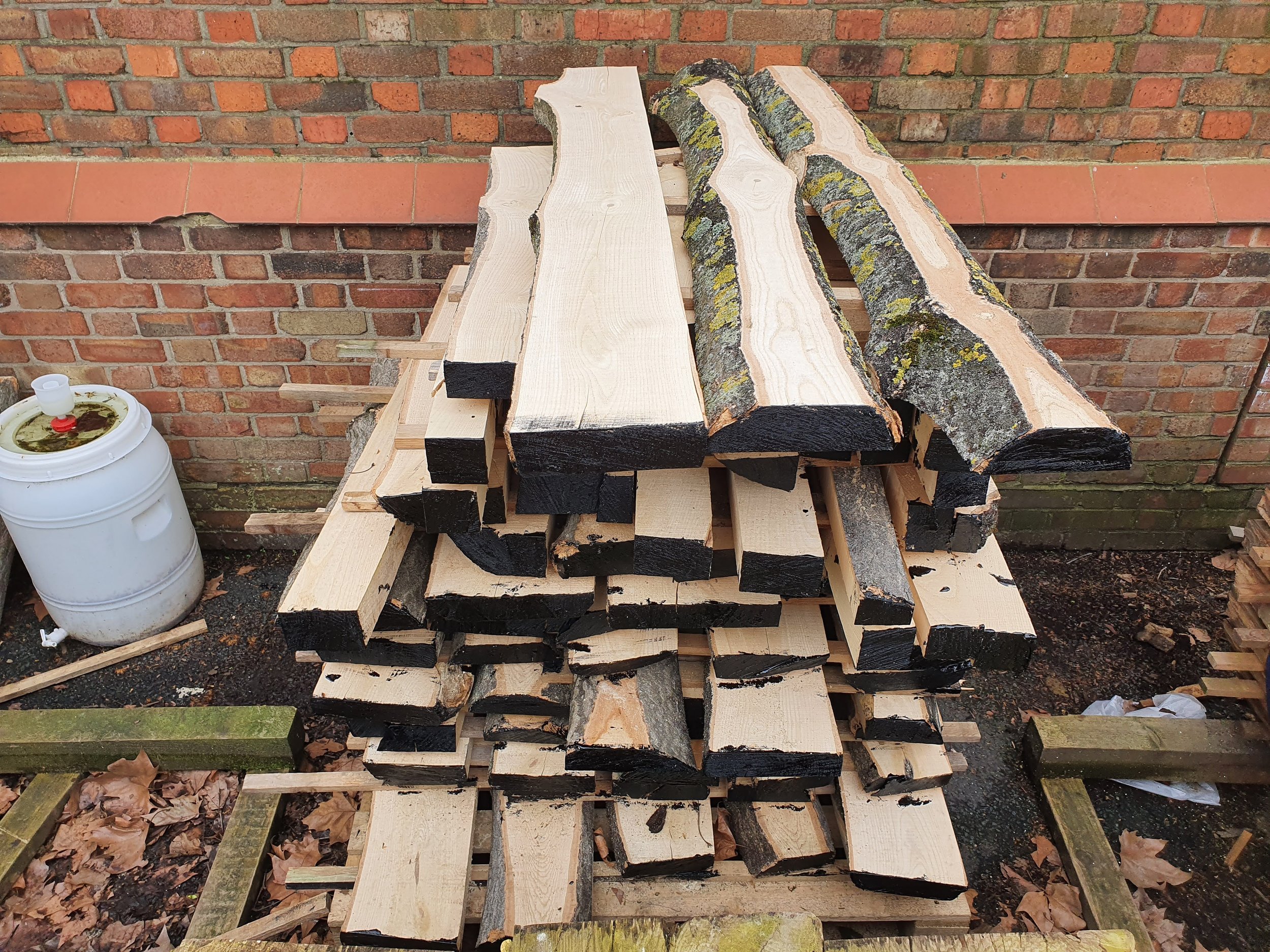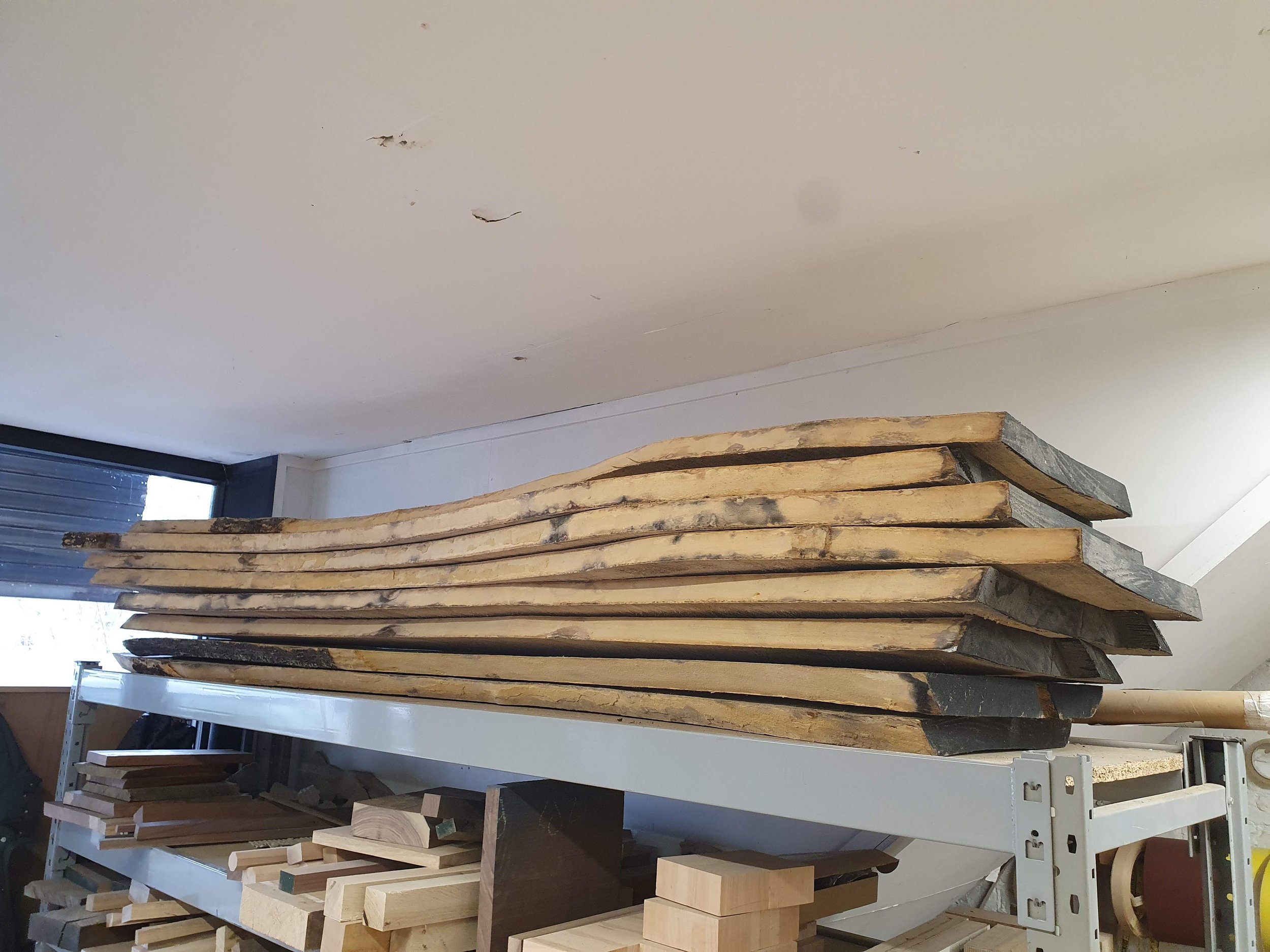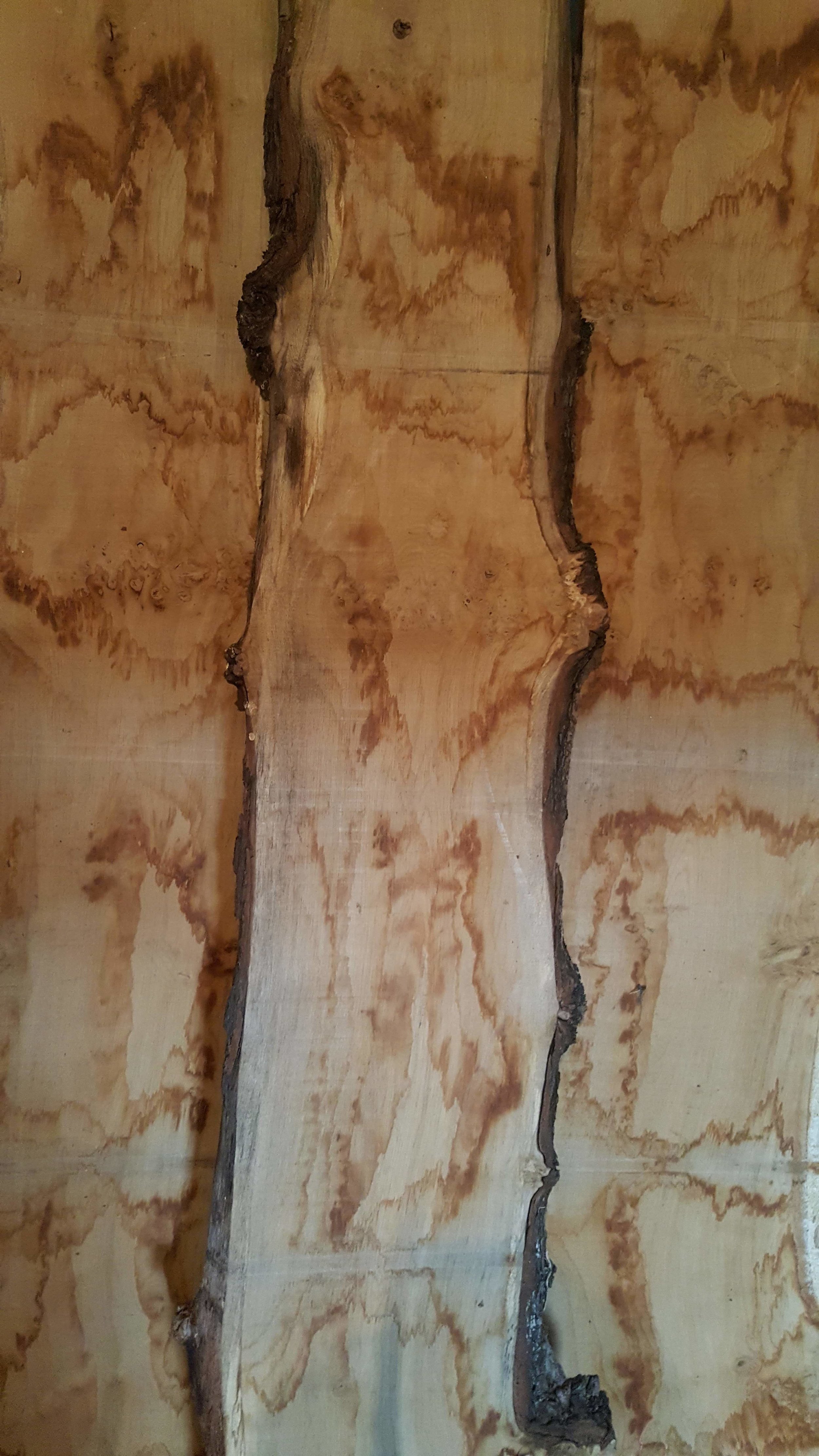The consultation for the first piece of furniture has begun and the client would like a writing desk in dark tones, a reddish-brown colour markedly different from the natural pales of the Ailanthus timber.
I prepared several samples from the Ailanthus timber finished with oil-based stains from browns and reddish browns to reds and purples to silvery blues. The Ailanthus timber does not take water-based stains well and only oil-based products seem to work their way into the grain well. The natural colour is pale yellow white like American ash and can also be scorched very black. All of the samples were finished off with three coats of Osmo satin.
Making samples is an art in itself and an important part of the consultation process with the client. The knowledge of the clients varies greatly but most people who come to me are either wood enthusiasts or interiors professionals who know exactly what they want, even if its not a so-called natural colour or tone. Either way, the tone and colour of the sample needs to match the piece delivered and the further away you get from the natural wood tone the more important it is.
Always make a few samples from different part of the timber to see if the stain or finish penetrates the wood in the same way and make careful notes of which cut or part of a board works with that finish.



















